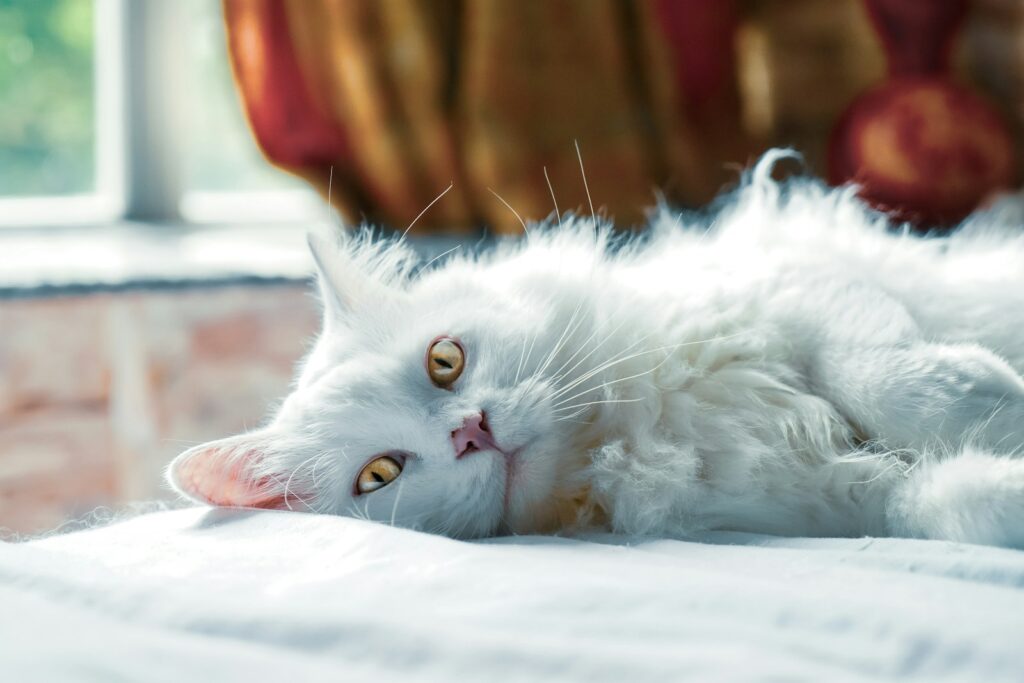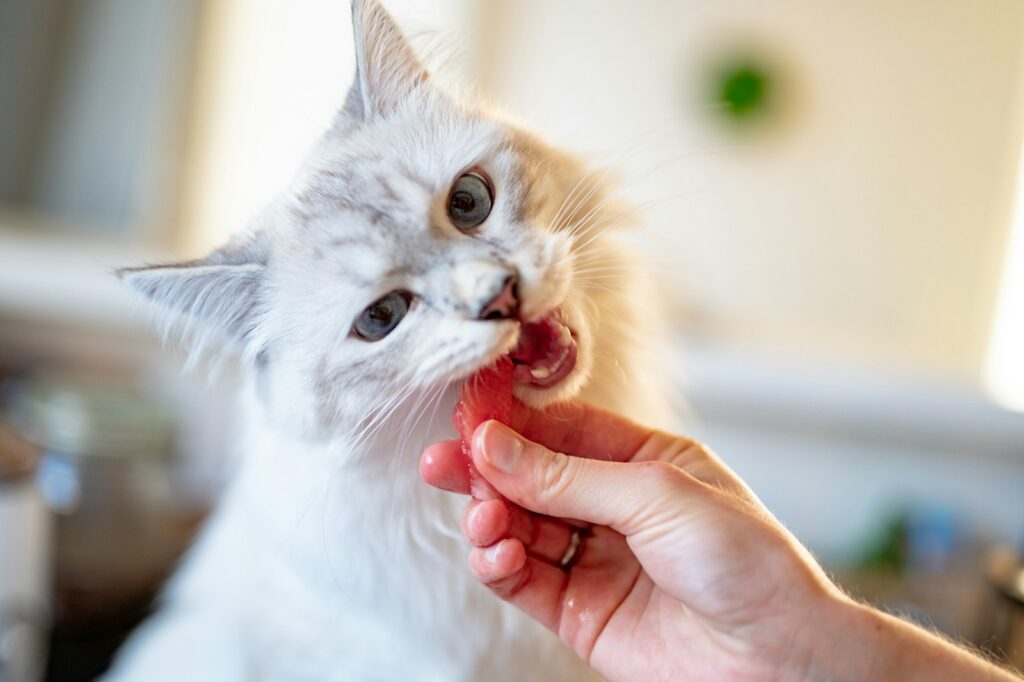What is Stomatitis in Cats?
Stomatitis is a severe oral health condition in cats that involves chronic inflammation of the soft tissues in the cat’s mouth, including the gums, cheeks, tongue, and back of the throat. This painful condition can lead to difficulty eating, grooming, and overall discomfort for your feline companion.
Stomatitis is believed to be an immune-mediated disease, meaning a cat’s immune system overreacts to the presence of plaque bacteria or other irritants in the mouth, causing excessive inflammation. While the exact cause is not fully understood, it is often associated with dental disease, infections, or an abnormal immune response.
This condition can affect cats of any breed, age, or gender, although some studies suggest that certain breeds, like Siamese and Persian cats, may be more predisposed. One of the primary indicators of stomatitis is a red, swollen appearance of the gums, often accompanied by ulcerations or lesions.
Cats with stomatitis frequently exhibit signs of oral pain, which may include pawing at the mouth, excessive drooling (sometimes with blood), bad breath, and reluctance to eat or groom. Behavioral changes, like irritability or withdrawal, may also occur due to the discomfort associated with this condition.
Stomatitis requires early diagnosis and effective management to prevent a decline in a cat’s quality of life. If left untreated, the chronic inflammation can worsen over time, leading to severe tissue damage and further complications.
Treatment often involves a combination of dental care, anti-inflammatory medications, and sometimes surgical intervention, such as full-mouth tooth extractions, to reduce inflammation and eliminate sources of irritation. Understanding stomatitis and recognizing its symptoms is key to ensuring your cat receives prompt and appropriate care.
Symptoms and Clinical Signs in Cats
Recognizing the signs and symptoms of stomatitis early is crucial for effective treatment and management. Cats suffering from stomatitis may exhibit a range of symptoms, many of which are associated with pain and discomfort in the mouth. Here are the most common signs to watch for:
- Excessive Drooling (Ptyalism): Cats with stomatitis often drool more than usual, and the saliva may be tinged with blood due to inflamed and irritated oral tissues.
- Bad Breath (Halitosis): Foul-smelling breath is a key indicator of oral inflammation and infection.
- Difficulty Eating or Loss of Appetite: Cats may struggle to chew or show reluctance to eat, leading to weight loss and general lethargy.
- Pawing at the Mouth: When experiencing significant discomfort, cats might paw their mouths in an attempt to alleviate the pain.
- Gums That Are Red or Swollen: One of the primary symptoms of stomatitis is inflammation in the gums, which often appear bright red and swollen.
- Bleeding from the Mouth: Severe cases may result in small amounts of blood coming from the mouth, either while eating or at rest.
- Behavioral Changes: Cats may become irritable, withdrawn, or even aggressive due to their constant pain and discomfort.
- Decreased Grooming: Pain in the mouth can lead to reduced grooming, often resulting in an unkempt or matted coat.
- Swollen Lymph Nodes: Enlarged lymph nodes under the jaw may be palpable as the body reacts to chronic inflammation and infection.
If your cat exhibits any of these symptoms, it is important to consult a veterinarian as soon as possible. Early detection and intervention can help manage stomatitis effectively and improve your cat’s overall well-being.
What Causes Stomatitis in Cats?
The exact cause of stomatitis in cats is not entirely understood, but it is thought to be a multifactorial condition influenced by viral, bacterial, and immune system components. Here are some key contributors:
Causes of Stomatitis in Cats
Stomatitis in cats can have various underlying causes, and understanding these factors is crucial in managing the condition. Some of the most common causes include:
Feline Dental Disease
Dental issues, such as plaque and tartar buildup, can trigger an immune response leading to severe inflammation in the mouth. Periodontal disease (also called cats gingivitis) is a significant contributor to stomatitis.
Viral Infections
Feline viral infections, such as Feline Calicivirus (FCV) and Feline Herpesvirus (FHV), are frequently associated with stomatitis. These viruses can cause immune system dysregulation, resulting in severe mouth inflammation.
Bacterial Infection
The presence of certain bacteria in the mouth can exacerbate the condition, especially when combined with poor oral hygiene.
Immune System Disorders
Cats with compromised immune systems tend to be more prone to developing stomatitis. Conditions like Feline Immunodeficiency Virus (FIV) or Feline Leukemia Virus (FeLV) increase susceptibility.
Food Allergies or Sensitivities
Dietary factors, including allergies or intolerances, could contribute to oral inflammation in some sensitive cats.
Genetics and Breed Predisposition
Some breeds, such as Siamese or Persian cats, may have a genetic predisposition to developing stomatitis, though this is not fully understood.
Environmental Stressors
Stressful environments or changes in a cat’s routine could potentially exacerbate inflammation by affecting overall immune health.
Understanding the root cause of stomatitis in your cat is essential to determine the most effective treatment plan. A thorough veterinary evaluation is often necessary to identify specific triggers and formulate an appropriate management strategy.
Diagnosis and Treatment Options
Diagnosing stomatitis can involve several steps, including clinical examination and diagnostic tools like dental X-rays to assess dental disease, evaluate gum tissue, and identify the affected teeth.
Medical Management
Treatment options depend on the severity of the condition and the underlying causes.
Pain Medications: Pain management is a crucial part of helping cats cope with this inflammatory dental disease.
Anti-inflammatory Drugs: Medications that reduce generalized inflammation in the oral cavity are often prescribed.
Treat Underlying Conditions: Viral infections, bacterial components, or metabolic diseases should be treated if present.
Dental Procedures
For many cats, medical management alone may not be sufficient. Dental procedures can play a pivotal role in providing relief:
Full Mouth Extractions: Dental extractions, particularly full mouth extractions, are often the most effective way to treat stomatitis in severe cases. By removing the affected teeth, the immune response to plaque bacteria is generally reduced, resulting in significant improvement for most cats.
Regular Dental X-rays: Veterinary dentists use X-rays to ensure all affected teeth and roots are addressed during extractions.
At-home Dental Care For Your Cat’s Teeth
Ongoing oral health maintenance at home can prevent severe stomatitis from recurring, particularly in mild cases:
- Brush your cat’s teeth regularly using feline-safe toothpaste to minimize plaque buildup.
- Use dental water additives or diets specifically designed to improve oral health.
The Role of Nutrition and Immune Support
A balanced diet plays a crucial role in treating and preventing stomatitis. Poor nutrition can weaken a cat’s immune system, making them more susceptible to viral infections, bacterial infection, and worsening periodontal disease. Consider adding supplements recommended by your veterinarian to support the immune system and overall metabolic health.
Preventing Feline Stomatitis
While stomatitis cannot always be entirely prevented, there are several steps cat owners can take to reduce the risk or severity of the condition:
- Maintain Regular Dental Care: Routine dental care is crucial in preventing the buildup of plaque and tartar, which can lead to inflammation. Regular brushing of your cat’s teeth with a veterinarian-recommended toothpaste can help maintain optimal oral health.
- Schedule Professional Dental Cleanings: Regular veterinary dental cleanings are essential for addressing dental issues that may not be visible during at-home care. These cleanings help prevent periodontal disease, which is a contributing factor to stomatitis.
- Promote a Healthy Diet: Providing your cat with a high-quality, balanced diet supports their overall health, including oral health. Some veterinary diets are specifically designed to reduce plaque and tartar buildup and can be beneficial in preventing oral issues.
- Monitor for Early Symptoms: Being attentive to your cat’s behavior and oral health can help catch signs of potential issues early. Look for symptoms such as bad breath, difficulty eating, or excessive drooling, and consult your veterinarian promptly if you notice any changes.
- Minimize Stress: Stress can weaken a cat’s immune system, potentially exacerbating health problems. Providing a calm and enriching environment can help keep your cat healthy and resilient against various conditions, including stomatitis.
- Regular Veterinary Checkups: Scheduling regular vet visits ensures that your cat’s overall health, including their oral health, is monitored closely. Early intervention can prevent minor issues from becoming severe.
By integrating these preventative measures into your cat’s routine, you can greatly reduce the likelihood of stomatitis or manage its impact more effectively if it occurs. Prevention begins with consistent care and early detection, making a significant difference in your cat’s overall well-being.
Helpful Resources on Stomatitis in Cats
Below are seven educational links and resources to help you learn more about feline stomatitis, its prevention, and treatment options:
Cornell University College of Veterinary Medicine – Feline Dental Disease: This resource provides an in-depth overview of dental diseases in cats, including stomatitis, symptoms, and treatment options. https://www.vet.cornell.edu
The American Veterinary Medical Association (AVMA): The AVMA offers information on common feline health issues such as stomatitis and highlights the importance of regular dental care. https://www.avma.org
International Cat Care – Dental Problems in Cats: An informative guide about common dental-related conditions in cats, including stomatitis, to help pet owners identify symptoms early. https://icatcare.org
Veterinary Partner – Feline Chronic Gingivostomatitis: A detailed article on feline gingivostomatitis, exploring causes, clinical signs, and possible treatments. https://www.vin.com
PetMD – Dental Disease in Cats: Learn about dental diseases in cats, including stomatitis, and what you can do to manage or prevent them. https://www.petmd.com
Feline Health Topics by the ASPCA: The ASPCA provides pet owners with reliable information about feline health, including oral hygiene tips and stomatitis care. https://www.aspca.org
Academy of Veterinary Dentistry – Cat Dental Care: This resource helps cat owners understand the importance of dental health and offers advice on managing conditions such as stomatitis. https://www.avdonline.org
These resources can provide valuable knowledge to help you better understand and address stomatitis in cats, ensuring your feline friend receives the best possible care.
Kate’s K9 Pet Care
Check out the other blogs on The Kate’s K9 Pet Care website for helpful and informational blogs, tips, and tricks in regards to all things pets! Check out all of our services online now!

Helping Cats Live Healthier Lives
Stomatitis is a painful, frustrating disease that requires a tailored approach for affected cats. While the condition can be difficult to manage, advances in veterinary dentistry and a combination of medical and surgical interventions have made it possible to alleviate even severe cases.
If your cat shows symptoms of oral inflammation or difficulty eating, don’t wait. Schedule a veterinary exam as soon as possible to identify the best course of action and provide relief for your furry friend. With proper care, many cats can recover and lead happier, pain-free lives.










